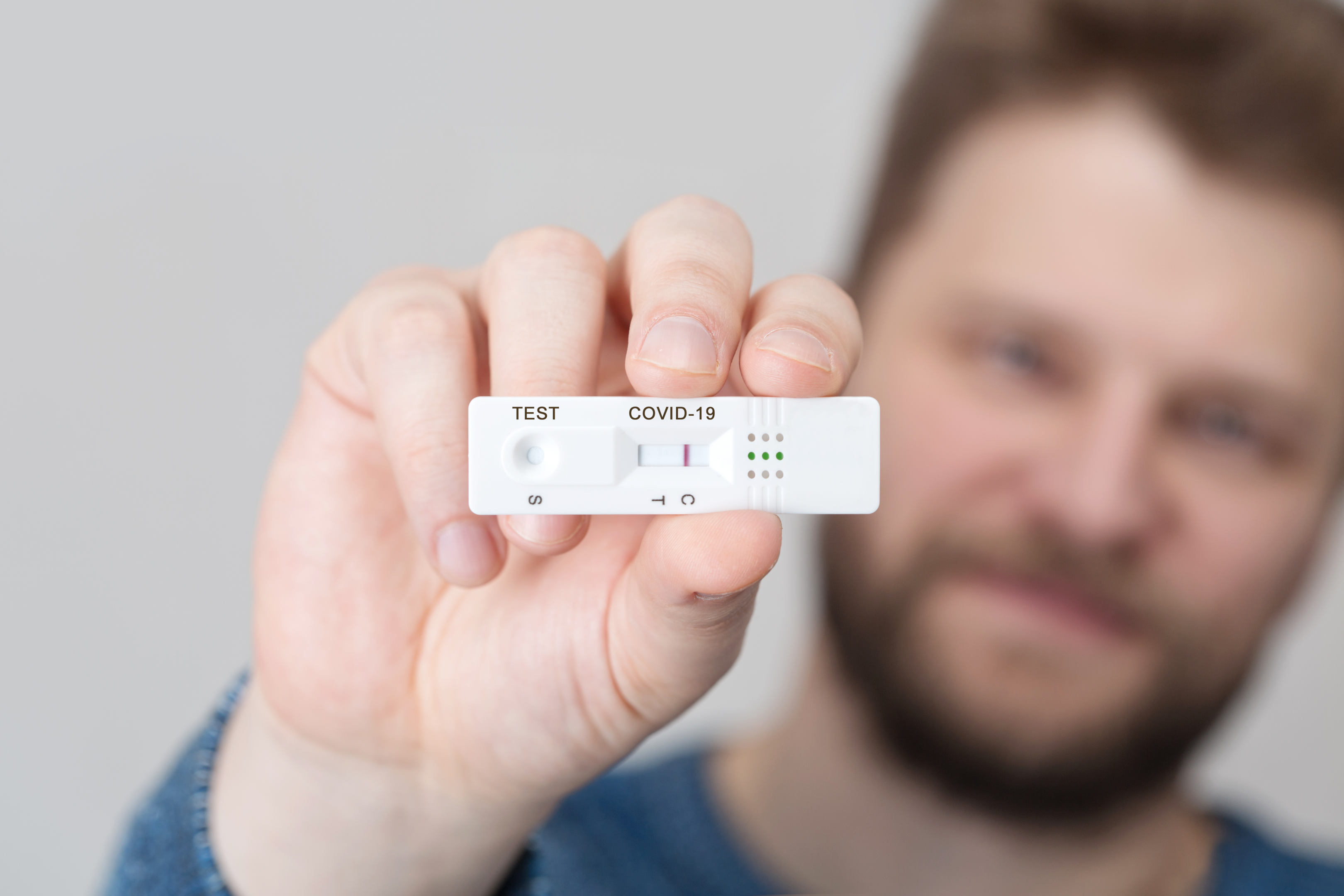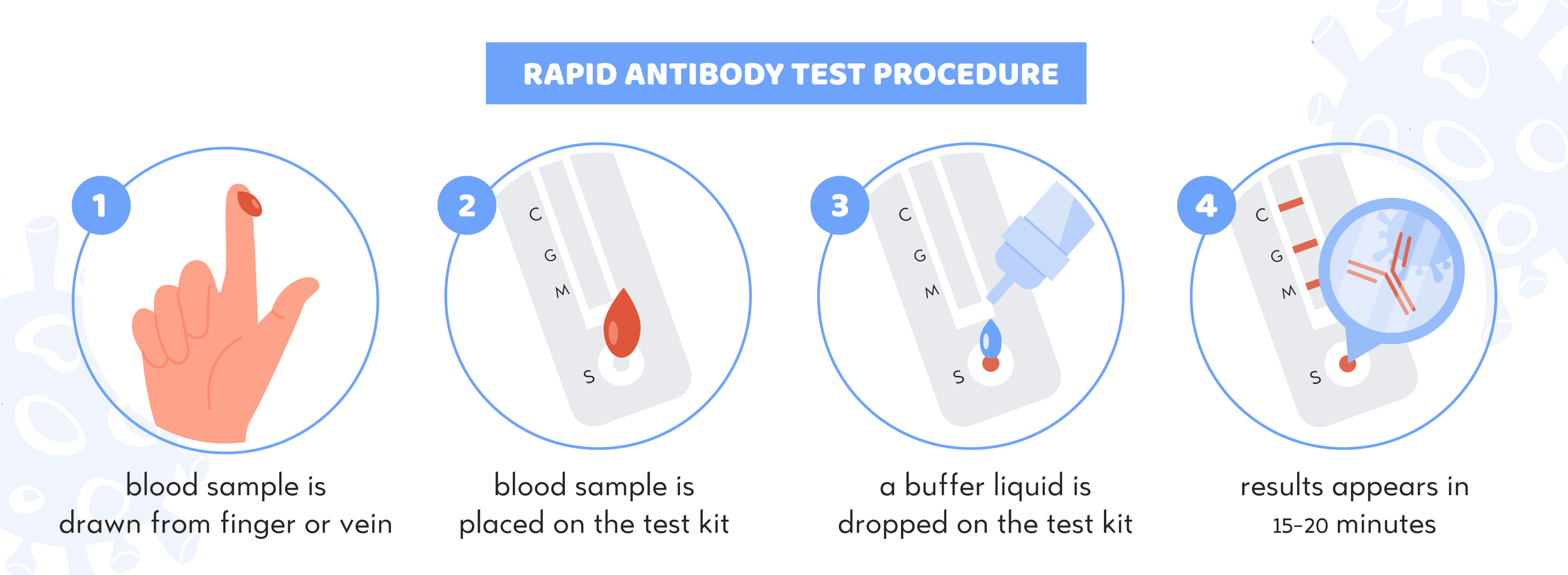What does c mean on a covid test?


Everything you need to know about the control line (C) and the test line (T) on the lateral flow test kits used for diagnosing COVID-19.

Whether you have yet to undergo COVID-19 testing or not, you should know how the tests work. According to recent data, over 500 million (according to Statista) tests have been conducted in the country.
Although various types of tests are available, and some follow different mechanisms than others, there are a lot of commonalities between these tests. The most common tests used for diagnosing coronavirus infection are lateral flow tests. The kits of these tests have various markings and letters on them. The most common letter markings are 'C' and 'T'.
What do these letters mean? Why are these markings used, and what does the appearance of any line in front of these markings mean? To understand this, you must first understand how a lateral flow test works.
Lateral flow tests (also known as lateral flow assays) detect infection through the directional flow of the sample (usually in the form of a fluid) over the target proteins, which have been embedded on a test cassette or a test card. These assays detect the vital antigen (in case of a COVID test) or a hormone in case of the pregnancy test.
The lateral flow tests are a very fast and simple way to diagnose the disease cases and to identify the people who may not have the symptoms of the coronavirus infection but are nevertheless spreading the virus from one person to the other in the community.
These tests are user-friendly and are very quick for the purpose. The positive responders should isolate themselves to curb the spread of the virus. Most lateral flow test kits available in the market have a reading window at one end and an adsorbent pad at the other end. Inside this device is the test strip, which changes colour to show the antigen-antibody reactions.

For this test, you need a swab sample from the nose or throat close to the tonsils or from both areas. The swab containing the sample is then dipped into the extraction solution. This solution is then dripped onto the paper pad. Some lateral flow tests use blood samples.
If a person tests positive for the virus, their blood will contain the viral antigens. These antigens will react with the proteins on the test cassette to produce a line. Now let us discuss different types of lines that may be noticed.
As the covid 19 spreads very quickly, sometimes, you may need a negative test result to resume your normal public life, e.g., travelling etc. We have a lot of government-approved tests available for you. Click here to explore and order the test kit according to your requirement.
The letter 'C' on the coronavirus test kit and any other test kits means control. So, the 'C line' refers to the control line. While conducting a lateral flow test for the coronavirus infection, the appearance of a line next to the letter 'C' is a must. It is thus the control line of the test.
This line should appear whether you are tested positive or negative. It also doesn't mean that you have a subclinical disease. So, why does this line appears?
A negative control is run parallel to the test sample in any biological test. This control is used to differentiate a positive result from the negative one. Another purpose of control is to see if the test is working properly. In other words, the absence of a test line would not confirm the negative test as it could be due to a faulty test kit that hadn't allowed the lateral flow.
Thus, the C line indicates that the strip is saturated with the liquid from the dropper, and the test cassette is allowing the lateral flow. A common rapid lateral flow tests work by coating the end of the test strips with some detectable substance, which is usually an antibody in most cases.
Whenever a liquid containing antigens against that particular antibody is poured on the end of a test strip, it flows laterally to the area coated with the antibodies (that's why it is called lateral flow testing), the antigen-antibody reaction occurs, and the 'Cline' appears. This appearance confirms the lateral flow properties of the test kit.
This line will help you to compare positive and negative results. How? In case of a positive result, the lines should appear next to both the letters 'C' and 'T'. While in case of a negative result, the line will appear only next to the letter 'C', and there will be no line against the letter 'T'.

The absence of both lines would mean the test kit is not working properly. The appearance of both lines in the absence of any clinical signs would mean either an issue with the test kit, that you have yet to develop any clinical signs, or that the test is false positive. It would help if you had more confirmation through the other nucleic acid-based tests (PCR).
The discussion about the C line will be incomplete if we don't discuss the other 'T' line. Let's discuss how this line forms.
The letter 'T' on the coronavirus test and any other test means test line. The line will tell you whether the test is positive or negative. As mentioned earlier, a test in which two lines appear, one against each letter, is a positive test. It means you should avoid contact with other people for a few days, especially the ones more vulnerable to the disease, and keep testing yourself until you get a negative result.
We have detailed the guidelines for ending isolation in another article. Click here to read it.
Read more: Is tiredness a symptom of COVID?
You may find other markings besides just 'C' and 'T' on the covid 19 testing kits. Most of the testing kits, at least in the United Kingdom, will have more than two markings on the test kit. What do these lines reflect? Let's discuss the other common markings on the test kits and what they mean.
The letter 'S' on the testing kits means the 'specimen' and is used to highlight the specimen well. This letter indicates where you are required to drop the liquid from the extraction tube on the test kit. Simply put, this letter marks where you need to put the sample for testing.

It is another common marking which is often noted on COVID test kits. If you have ever visited a supermarket, you must be familiar with the barcode, which is scanned by the staff and tells some important information about the items. This QR code on the COVID testing kit acts in a similar way. But what does this code tell you?
This barcode is designed to be scanned by smartphones. Instead of the computer at the retail shop or the superstore, this code is connected to the NHS app and it is used for logging the test results into that NHS data bank. This practice was used during the peak of the pandemic to trace the positive cases.
This QR code is similar to that used for digital vaccine certificates.
Some test kits also have a number at the top, usually, the serial number, which helps the laboratory staff in identification. There is sometimes a line or a space on the kit for record keeping and identification. These markings are less common nowadays but were routinely used during the height of the pandemic.
Read more: What Is The Liquid In COVID Lateral Flow Test?
Here are some useful tips about interpreting the rapid antigen test for COVID-19 that can help you immensely. For routine testing, the appearance of the 'C' and 'T' lines is enough for diagnosing coronavirus disease. However, there are some other things you should keep in mind. These are;
The faintness and sharpness of the line don't matter. The mere presence of the line means it should be read. The test will be interpreted as positive even if both lines are faint.
Use only the new test kit and discard the expired and old ones. These kits may give unreliable results.
The test results are valid only for the period mentioned in the kit manual. Typically, this period is between 15-30 minutes. The results will not be reliable after this time and shouldn't be read.
The absence of both lines or the presence of just the test line means that the test results are invalid. You either need to repeat the test or take a more accurate one.
The absence of control lines can be due to various reasons, e.g., insufficient volume of the diluent and incorrect techniques used for the sampling and testing.
The antigen tests for the coronavirus are less sensitive means you can have false negative results (a negative result while having the disease). The sensitivity of antigen-based tests is just 64-65% which means there is a 35% chance that you will test negating in the presence of disease (Various studies have given even lower or higher figures in the range of 50-82%). So, the results should be interpreted with caution.
The sensitivity is best for nucleic acid-based tests (e.g., RT-PCR), but they may detect the un contagious virus levels. So, the positive antigen test means you are contagious and can spread the disease to others. The antigen tests have good specificity, which means you are less likely to have a false positive test (a positive test without the disease).
Rapid antigen tests are rapid tests that are used for the screening of people who might have contracted the virus and might be spreading it to other people. The UK government conducted millions of free COVID tests to screen millions of patients. Various markings, e.g., C, T, S etc., were used to facilitate the users and the laboratory staff. Some kits also have additional markings, e.g., a QR code used by the local authorities for record keeping.
The 'C' marking represents the position of the control line, which should be there for both positive and negative tests. This line shows that the test kit is working. The absence of this line means invalid results.

The interpretation of COVID test results is easy. However, you may need help while facing any dubious situations. We at Welzo.com are determined to help you with in all health-related issues. Our website is a rich source of health-related information, diagnostic tests and medicines. Click here to explore the Welzo world.
If you need guidance and help with matters related to your health, click here.
If you have become familiar with every technical detail about COVID testing, you can now use our COVID-19 Antibody Blood Test to diagnose coronavirus disease. It is a fast and quick test and can be conducted easily at home. All it needs is the blood from a single finger prick. Click here for more information and to place your order.
Another similar test is the Rapid Antigen COVID-19 Test with fit to fly certificate. It is approved for use in the EU and USA. It gives rapid results within 12 hours, and you can also seek guidance from the video supervision option. Click here for more information and to place your order.








Plus get the inside scoop on our latest content and updates in our monthly newsletter.